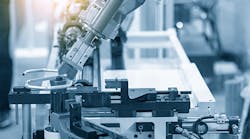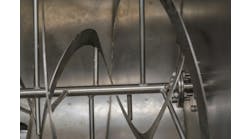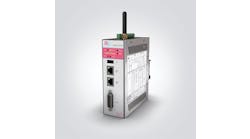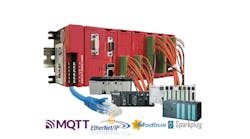Tobey Strauch is an independent principal industrial controls engineer in Fremont, California.
Tell us about a state-of-the-art machine-controls technology for discrete manufacturing.
Tobey Strauch, independent principal industrial controls engineer: Motion control has improved tremendously and is more efficient with less wiring. Mechanically, there is more precision, and the software packages are better. The driver for this is robotics. The more that we improve robotics, the more advanced one-axis motion becomes.
Also read: How IEC 61499 can standardize interoperability
The response with the drive technology is that it’s all about motion integrated lines, using gantry systems where robots are too expensive. Bosch Rexroth is at the forefront for this, and Beckhoff has made huge strides for applying it to conveyance with the XTS and XPlanar systems, as well as the Automation Technology for Robotics (ATRO). This leads to smaller form factors, and using 24 Volts allows designers to decrease cabinet and machine size as seen with integrated-chip (IC) lines, battery production lines and discrete manufacturing that is being built to make products that are going from concept to mass production.
Collaborative robots have increased payloads and reduced safety risks. The problem right now is getting enough people and robots available for station design and install.
Adding the seventh axis allows a robot to machine-tend a group of processes. Companies such as Tolomatic are building these to specification. This opens a whole new realm for mechanical design because end-of-arm tooling is of growing importance. However, motion solutions with cartesian robots are cheaper than full robots. Modern gantries are faster and less cumbersome than before. Festo has a good custom build program, along with some smaller names and, thus, many design options.
Two sub-activities that are influencing the motion/robotics increase is vision and safety. Artificial intelligence (AI) and machine learning are being incorporated into vision applications. Keyence and Cognex have AI built into some of their applications, and this is allowing plug and play on discrete lines for quality validation. Omron and Universal are attaching vision systems to their cobots as part of a package. This shortens design build to operation cycle. The caveat is having people knowledgeable and open to adapting design process to the new technologies.
What have been the biggest improvements to machine-controls technology in the past five years?
Tobey Strauch, independent principal industrial controls engineer: There is a growing trend to normalize PLC software and have open-source solutions. As integrators are pushed to develop systems faster and hardware becomes more communized with modular parts and hardware, PLC code should not be the blocking factor.
PLCNext by Phoenix Contact, Wago and other PLC producers are getting into the market. The big three are Siemens, Rockwell Automation and Mitsubishi Electric for discrete manufacturing. However, this is regional and within submarkets. Traditionally, there have been PLC manufacturers that dominated specific industries. If we standardize on an open PLC language, then the CoDeSys-based systems will take over. Note, the increase in the use of Beckhoff TwinCAT. This also has to do with the chip supply and availability, but the point is that if the code standard keeps pushing to open source, then it does not matter what your favorite hardware is; all the “programmers” can accomplish the logic.
What’s the most innovative or efficient machine-controls technology application you’ve ever seen or been involved with?
Tobey Strauch, independent principal industrial controls engineer: This is hard. It depends on the side of the coin you are on. What do I mean? Remember Schneider Electric utilized bit mapping and dual networks 40 years ago. There are big things that are great on the process side and on the discrete side. One with data exchange, and the other with motion and robotic controls.
Modern systems have added the data and the networking, and Emerson and DeltaV have excellent production capability on the process control side, and process-controls people set up networks and do unmanned controls consistently. This is because of the increased technology in SCADA control and manufacturing execution systems.
It's hugely database-centric, and data control is prime. What has happened recently with networking and IO-Link and the emergence of systems like Ignition that can bring the continuous process-data-driven product to the manufacturing floor makes SCADA a more in-depth adventure than creating a remote terminal on a water system based on picking up relay signals. Fanuc has impressed by running for 26 days with the lights out.
The renewed idea of being able to simulate a system before putting it on the floor is exciting to me. I can program a robot before I buy it. Vention and RoboDK are making it possible to simulate and visualize cells and verify bill of materials (BOM), while integrating with the mechanical and electrical design. Utilizing these types of tools speeds up the thought process and allows the agile environments to utilize the fail-fast concepts. This is key when you are building a production line for a product that has never been made. In short, cloud-based design means my mechanical engineer can design in Toronto, I can be in San Francisco, and the part supplier in Chicago can monitor our needs so that, when we are ready to pull the trigger, it’s almost as easy as swiping a credit card. FedEx already shows up on a dime.
How has machine-controls technology benefitted from remote monitoring and connectivity?
Tobey Strauch, independent principal industrial controls engineer: Remote monitoring and connectivity are key to maintenance response time and reliability. It’s also important for trending and figuring root-cause failures. Customers want to do more things with fewer people. The only way to do that is with data and remote connectivity.
On the machine building side, it’s the IO-Link master/slave systems that allow us to do more with less wiring. This puts more load on the programming side and requires that controls system engineers who are programming understand how to provision hardware. It also allows more feedback from cards so that you know when a card is unhealthy. Therefore, I get upset about no drawings. We must know what the card is doing, where it goes and what it's connected to in order to program it correctly.
Can you explain how software development has changed machine controls in discrete manufacturing?
Tobey Strauch, independent principal industrial controls engineer: Software is becoming a more integral part. Why? Instruments are being made that send signals to the cloud. Instruments are talking over Ethernet IP, Modbus, IO-Link and CC-Link. The only way to unpack that data is knowing the configuration and how the chip is sending it out—mapping and protocol.
Ignition is my favorite go-to for a software tool that can drive the PLC and talk to databases. It can be an HMI and run on a controller if you see fit. Along those lines, the CoDeSys platforms are doing this, as well. The current drive will eventually get to a point where HMIs are created as we program PLCs.
How do control technologies figure into digital-twin platform models being used by manufacturers?
Tobey Strauch, independent principal industrial controls engineer: They are critical on design for accuracy. I think more so with batch or continuous process, but also with space savings and modular design for discrete. Think about it. If I can design a machine or a robot cell or a machine with a robot cell and input to a machine, and I can demonstrate it digitally, then I can know my BOM and 60-80% of my design and space requirements and interactions and verify logic before going to build or a factory acceptance test (FAT). It’s like we could have a digital design review before FAT, so that the customer can verify that the ideas match what they think, and the integrator knows limitations. On the backside, companies such as Emerson have simulated, say, a power plant and then used the simulation for operator training and to make the process optimized before install.
For continuous process, this is where they are saving time on cut overs. Time is money.
When will machine controls become IT-friendly enough that engineers are no longer required for installation and operation?
Tobey Strauch, independent principal industrial controls engineer: Never. There are too many hardware configurations and software interfaces, and no one engineer or technician will know all of them. Also, it depends on design process. Management is shortening the process, and this is forcing mistakes. Those mistakes show up on controls software and integration, and usually testing is cut short for saving money. Then the site acceptance test (SAT) goes over.
For IT/OT to really converge, the idea that control-systems engineers cannot do networking and IT and the vice versa must go away. Our industry is slow to move paradigms. Reference how long it took us to accept wireless communications in the late 1990s and early 2000s. Now, it is commonplace.
What future innovations will impact the use of machine-controls technology in discrete-manufacturing operations?
Tobey Strauch, independent principal industrial controls engineer: We will continue to advance in field components—adding power over Ethernet is a small accomplishment, but it has big bang for its buck. One thing that Rockwell Automation does well is the importing of electronic-data-sheet (EDS) files so that it’s easier to configure components at the software level. Every platform needs this, and every hardware device should have it, so it automatically scans in like Beckhoff TwinCAT. The theoretical guys will keep making improvements on components. As hardware changes are made, field devices will get smarter. Simulation will end up being the norm.
Also, I think the protocols will keep improving. IO-Link is the closest thing to plug and play for field devices, and it will go to the point of plug, play and send status to the cloud shortly.
There will be merging on electromechanical, so that sensors in mechanical end effectors will be built-in. Three-dimensional (3D) printing of parts with additive manufacturing and the convergence with robotics will give us materials and interfaces that are more organic.






